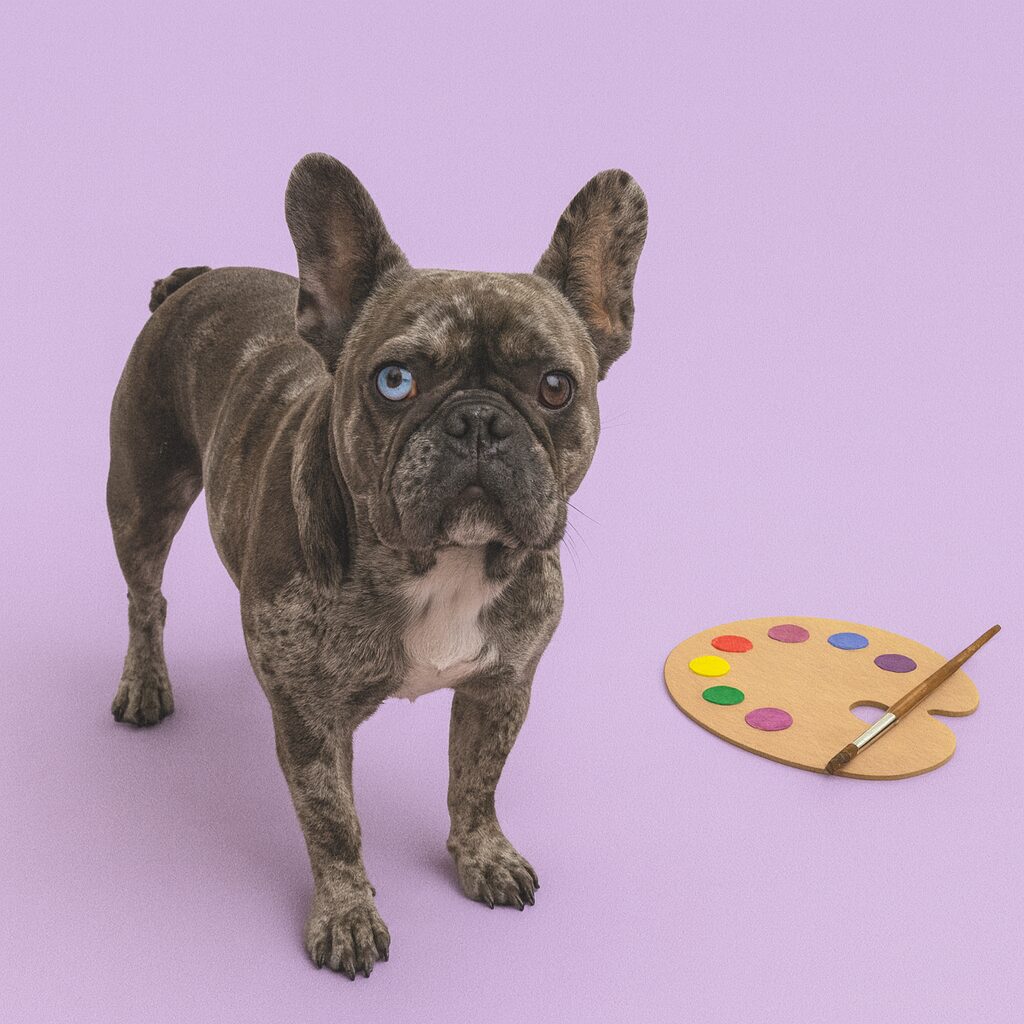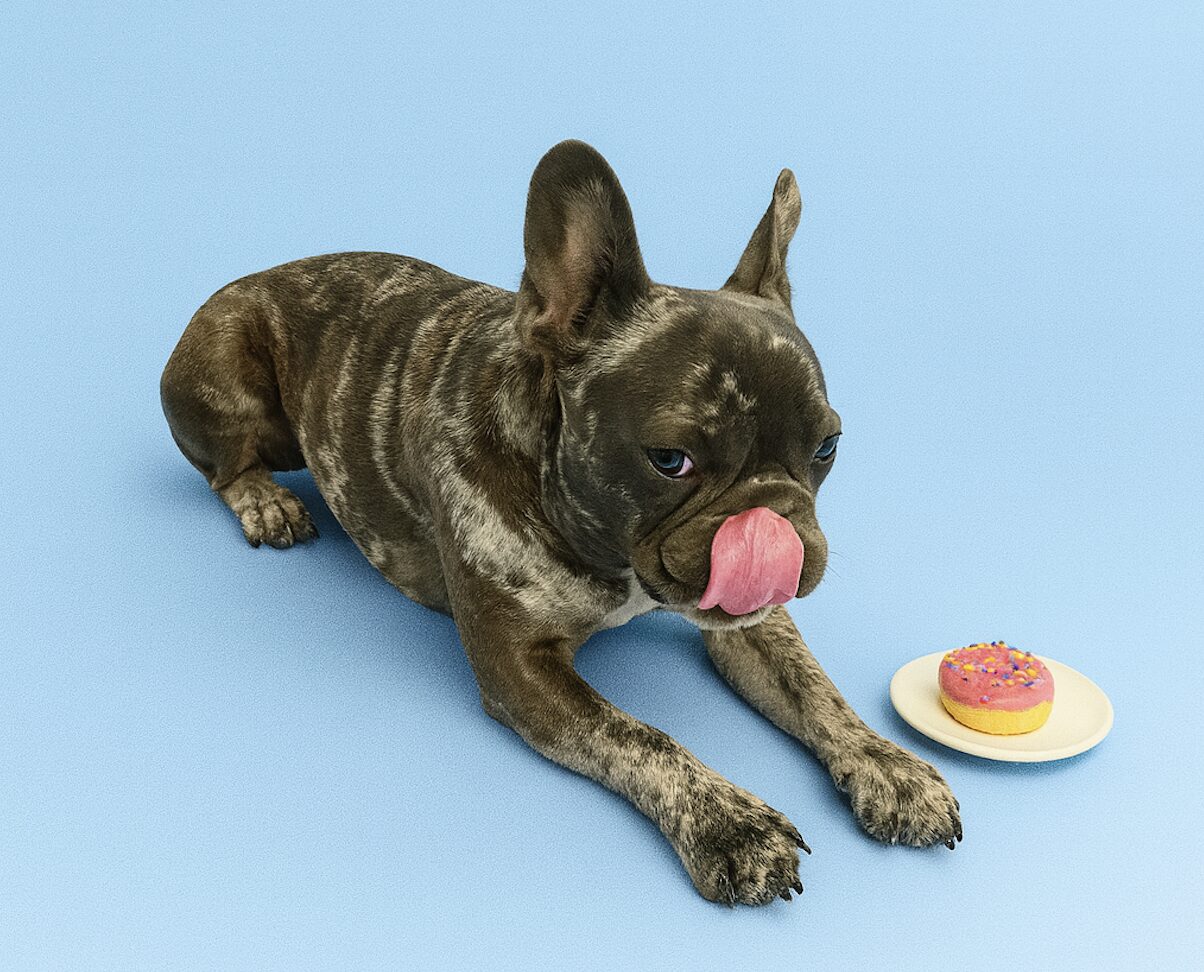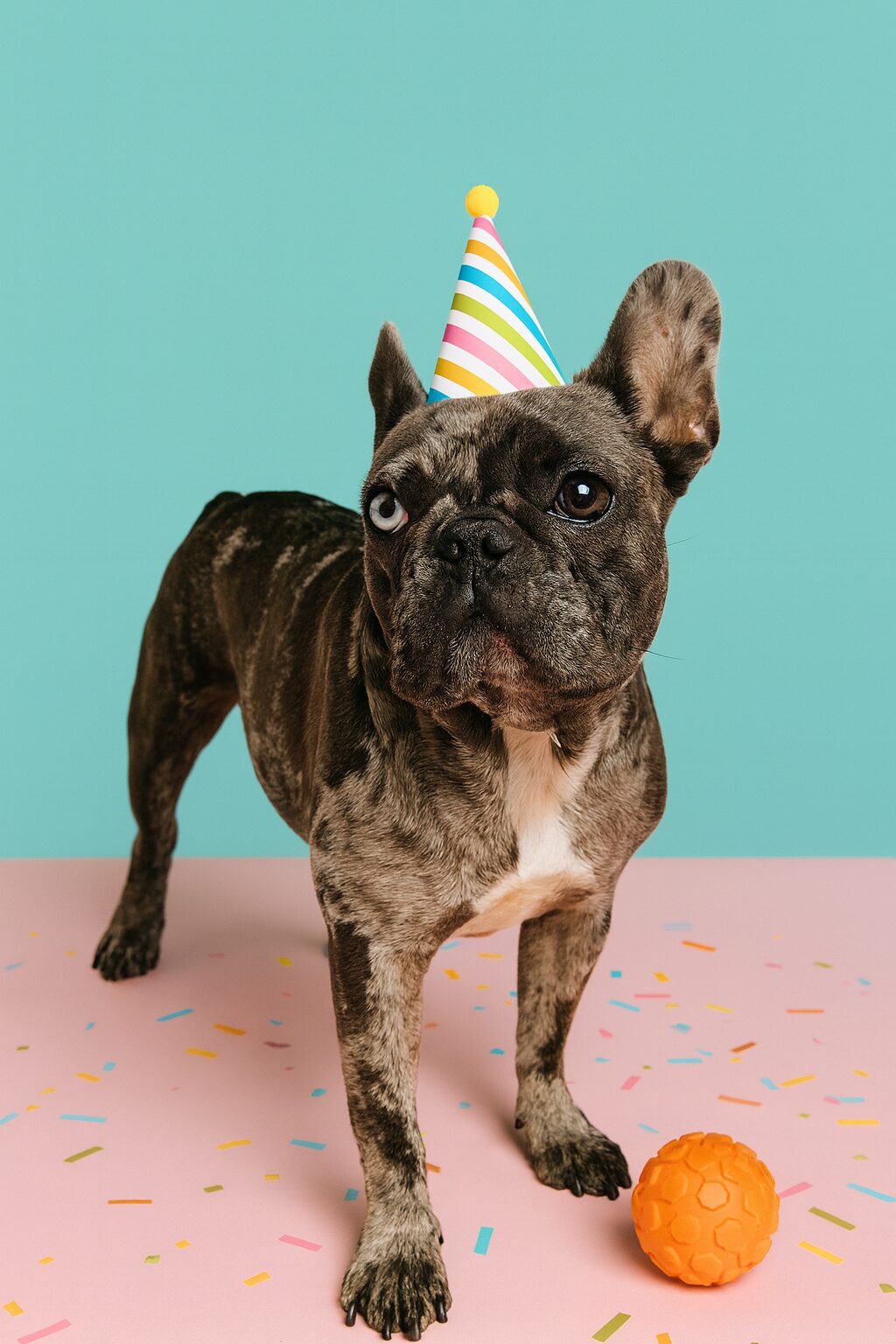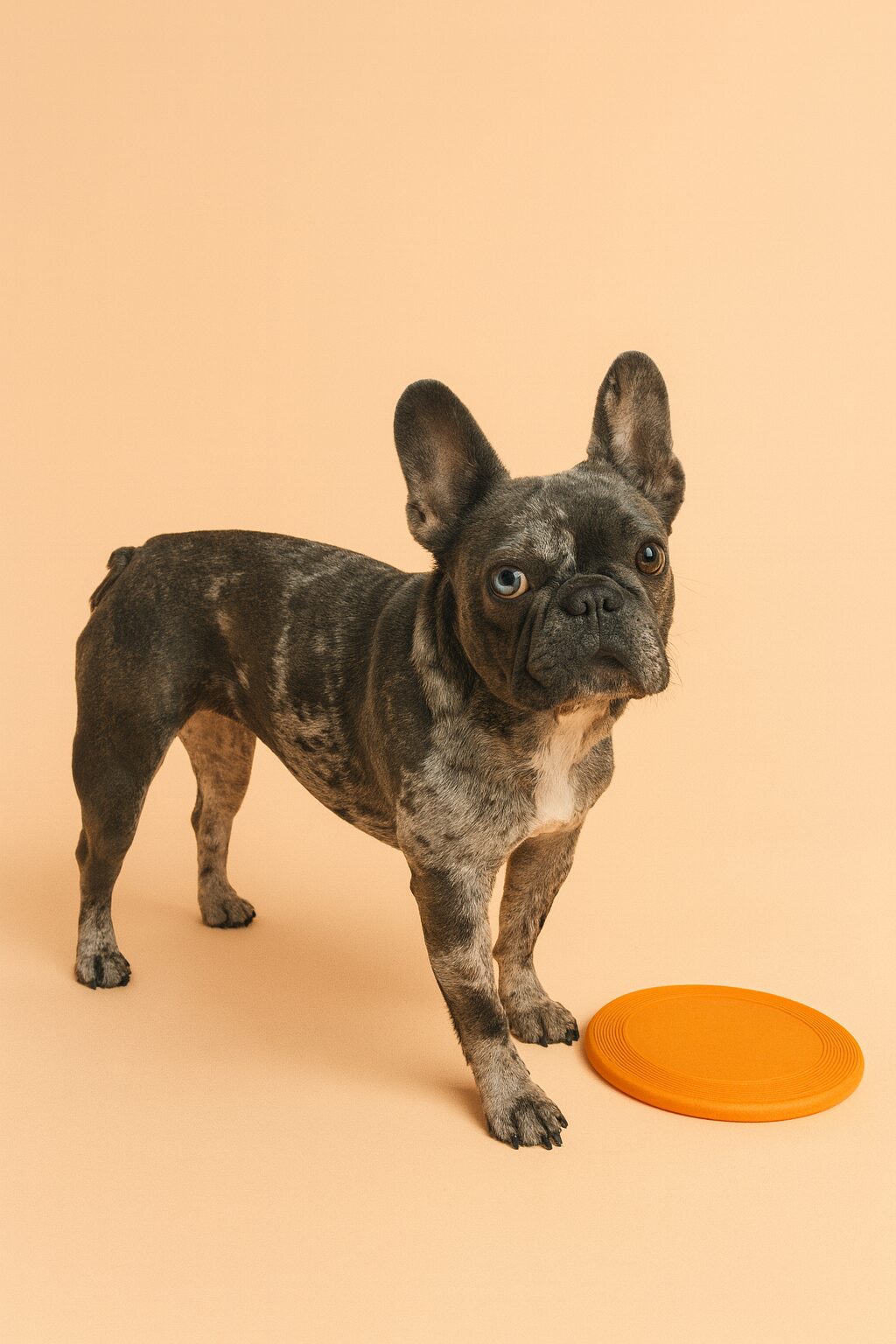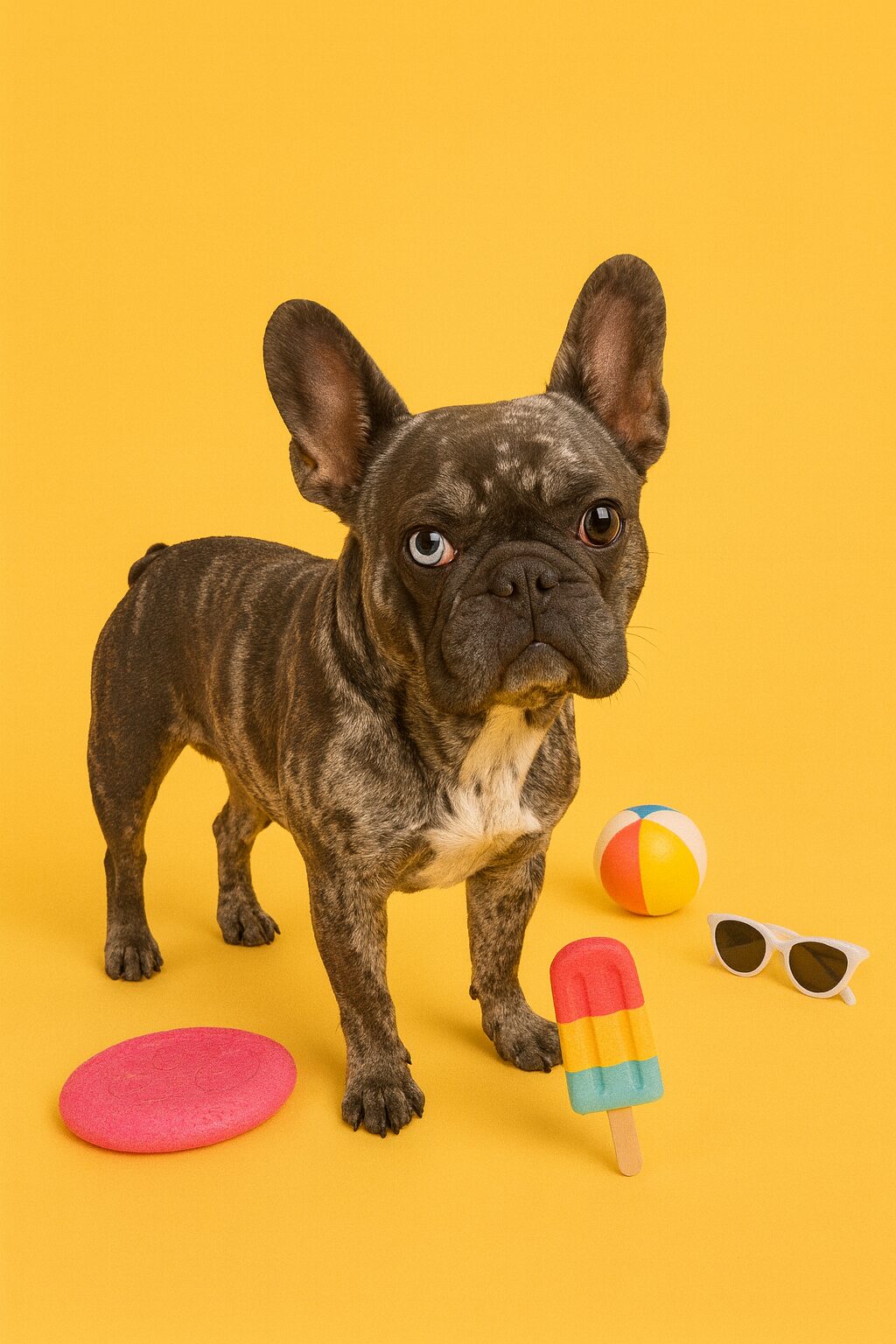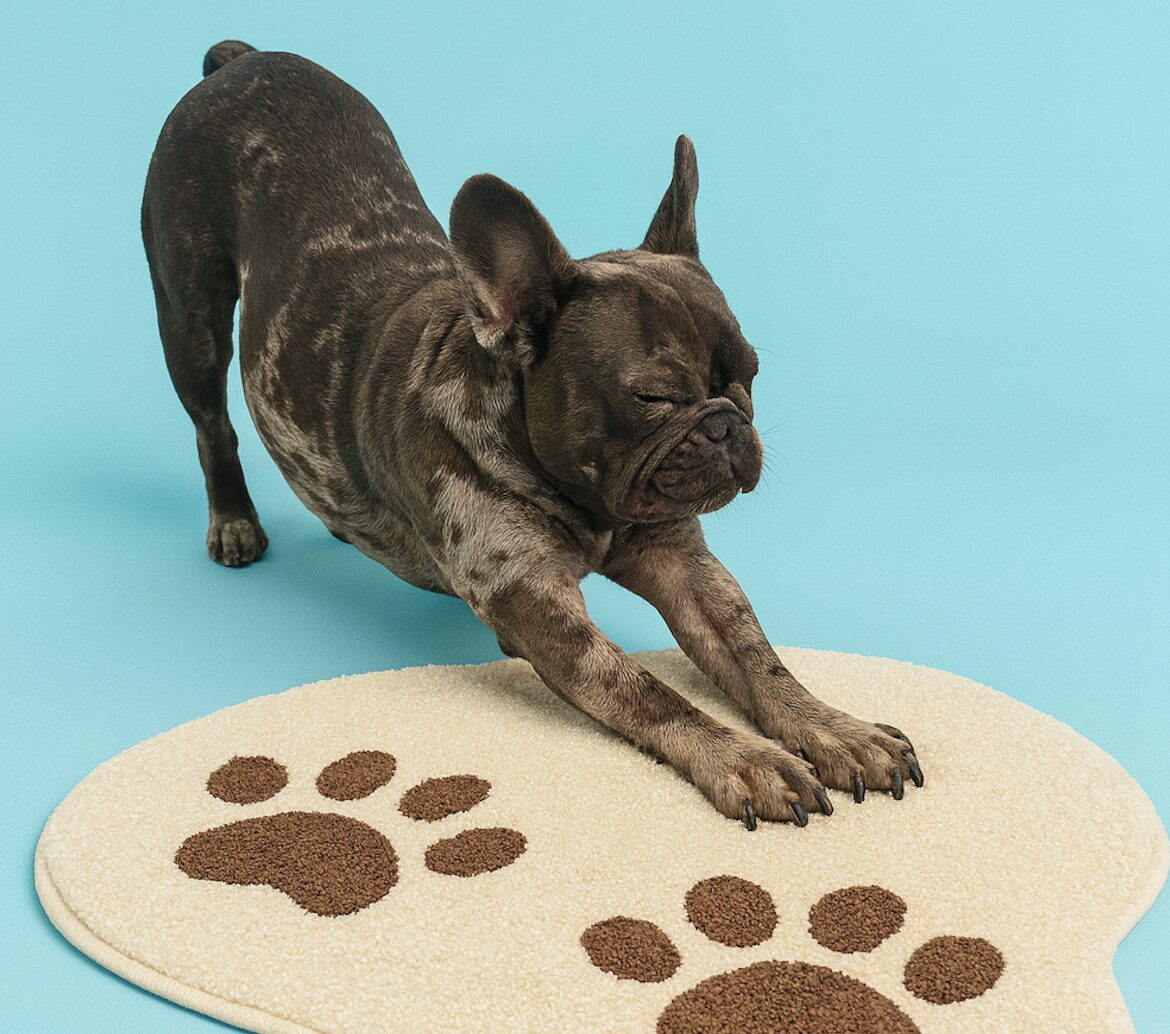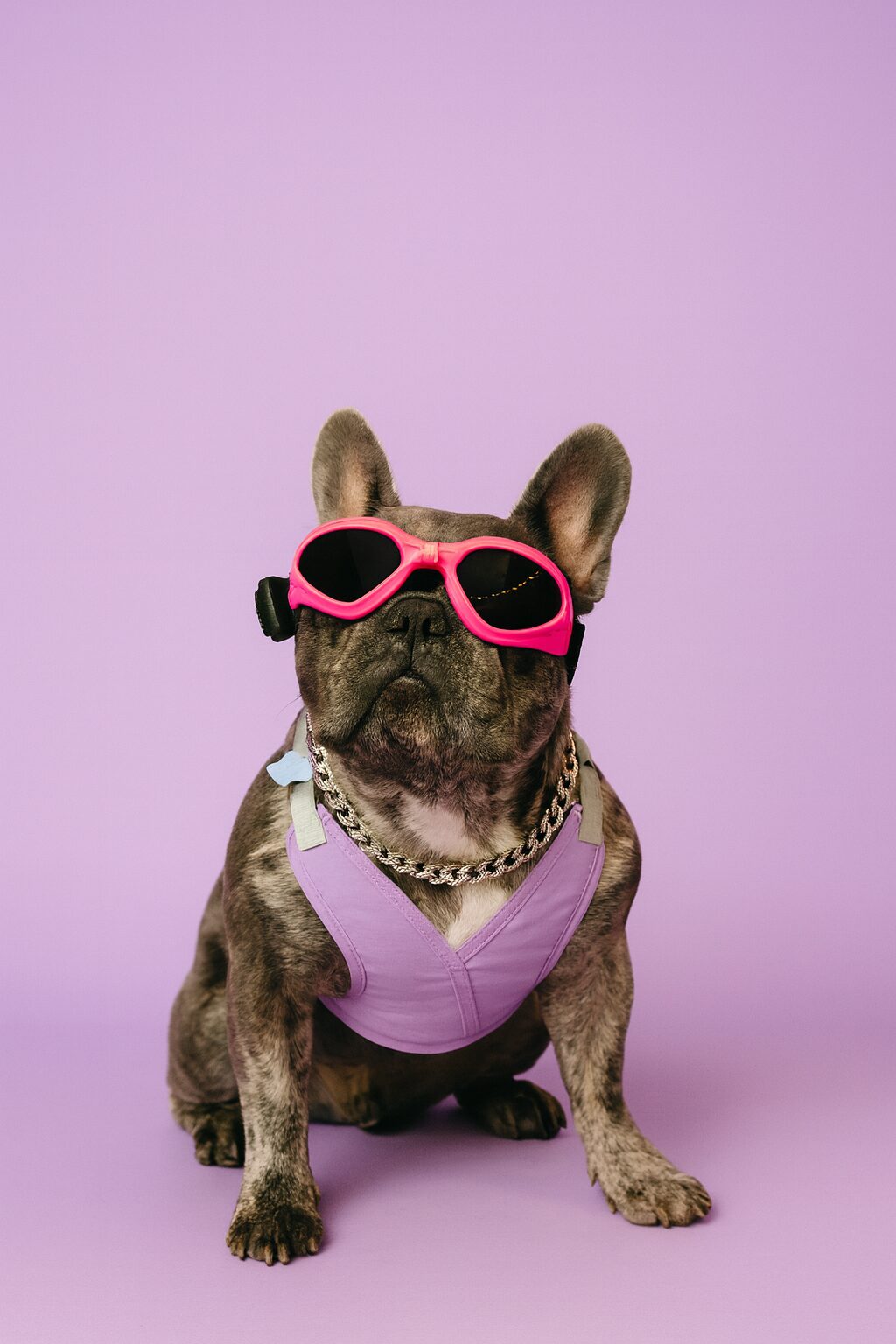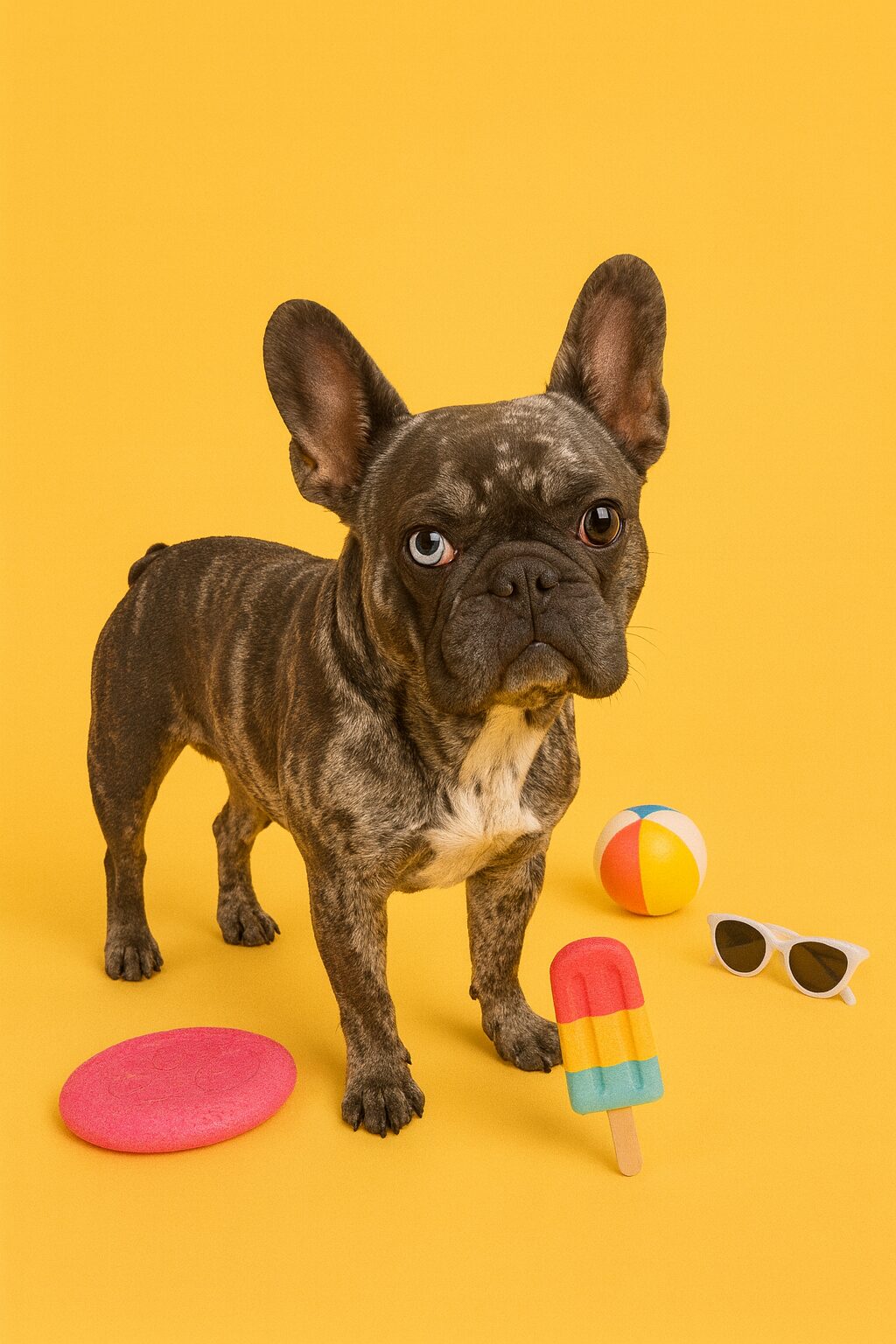The first time I brought Maven home, I had no idea how often I’d be Googling “how much should a French Bulldog eat?” in the middle of the night.
One day it was puppy mush, the next day she was stealing bites of my toast like a tiny, judgmental carb bandit. 😂
If you’ve got a Frenchie — whether they’re a roly-poly puppy or a wise, snorty senior — feeding them right is one of the most important things you can do for their health and happiness.
But with all the advice out there (raw, kibble, grain-free, home-cooked — oh my), it can be overwhelming.
That’s why I’ve put together this complete French Bulldog feeding guide by age — so you know exactly what to feed, how much, and when, every step of the way.
Why Feeding Right Matters for French Bulldogs 🐾🩺
Frenchies are adorable little tanks — muscular, compact, and ready to bulldoze their way to the food bowl. But they’re also prone to:
- 🫁 Respiratory issues that make weight control extra important
- 💩 Digestive sensitivities (yes, the gas is real)
- 🦴 Joint problems if they carry too much weight
- 🐕🦺 Food allergies more common than in many breeds
Feeding them correctly from day one supports healthy growth, prevents obesity, and keeps their skin, coat, and gut in top shape.
Feeding Your French Bulldog Puppy (8 Weeks – 6 Months) 🍼🍗
Ah, the puppy stage — full of zoomies, tiny shark teeth, and a bottomless pit for a stomach.
Puppies grow fast, and Frenchies need the right nutrients for muscle, bone, and brain development.
General feeding guidelines:
- 🐾 Age: 8 weeks–6 months
- 🍽️ Meals per day: 3–4
- ⚖️ Portion size: Follow your vet’s guidance or the bag’s chart, but expect ~1–1.5 cups total per day split into meals
- 🐕🦺 Food type: High-quality puppy food formulated for small breeds
What to look for in puppy food:
- 🍖 Protein-rich (at least 22–28%) for muscle growth
- 🐟 Healthy fats (8–12%) for brain and coat health
- 🥕 Balanced vitamins & minerals for bone development
- ❌ Avoid fillers like corn, soy, and artificial dyes
Maven’s tip: I found Maven did best on a chicken & sweet potato puppy kibble — anything with too much grain made her itchy.
Puppy feeding tips:
- 🕒 Feed at the same times daily to help with potty training
- 💧 Keep fresh water out all day
- 🐾 Use slow-feeder bowls to prevent gulping and gas
Feeding Your French Bulldog Adolescent (6 Months – 1 Year) 🐕🥩
This is when your Frenchie starts looking less like a potato and more like the muscular, compact adult they’ll become.
They’ll still have bursts of puppy energy, but growth slows, so you can start adjusting portions.
General feeding guidelines:
- 🐾 Age: 6–12 months
- 🍽️ Meals per day: 2–3
- ⚖️ Portion size: 1–1.5 cups per day, depending on activity level
- 🐕🦺 Food type: You can transition from puppy to adult small-breed food around 10–12 months
Transition tip: Switch foods gradually over 7–10 days to avoid tummy troubles.
What to focus on now:
- 🐟 Omega-3 fatty acids for skin health (great for Frenchies prone to allergies)
- 🦷 Kibble size that supports dental health
- 🍗 Protein at ~18–25% to maintain muscle without overfeeding
Feeding Your Adult French Bulldog (1 – 7 Years) 🥦🍖
Adult Frenchies are the kings and queens of “just one more snack, please.”
Unfortunately, they’re also prone to packing on the pounds — and a chubby Frenchie is at risk for heart, joint, and breathing problems.
General feeding guidelines:
- 🐾 Age: 1–7 years
- 🍽️ Meals per day: 2
- ⚖️ Portion size: 1–1.5 cups total daily, depending on activity
- 🐕🦺 Food type: High-quality adult formula for small breeds
Best diet features for adults:
- 🍖 Protein around 18–25%
- 🥦 Fiber to support digestion
- 🐟 Fish oil or flaxseed for skin & coat
- ⚖️ Balanced calories to maintain ideal weight (usually 20–28 lbs for most Frenchies)
Maven’s real-life moment: Around age 2, Maven started getting “winter weight.” I swapped half her kibble for green beans at dinner, and within two months she was back to her ideal shape — without feeling deprived.
Feeding Your Senior French Bulldog (7+ Years) 🌙🍗
By the senior years, your Frenchie is probably more into naps than park sprints, which means their calorie needs drop.
But their nutritional needs shift — joint support, brain health, and easy-to-digest proteins become more important.
General feeding guidelines:
- 🐾 Age: 7+ years
- 🍽️ Meals per day: 2 (or smaller, more frequent meals if they prefer)
- ⚖️ Portion size: Often ¾–1 cup per day, depending on weight & activity
- 🐕🦺 Food type: Senior or “7+ years” small-breed formula
Look for:
- 🐟 Omega-3s for joints and skin
- 🦴 Glucosamine & chondroitin for joint health
- 🧠 Antioxidants for brain function
- 🐓 Highly digestible proteins to support muscle
Extra tip: Senior Frenchies sometimes lose interest in dry kibble — adding warm water or a spoonful of wet food can make it more appealing.
Treats, Table Scraps, and Special Diets 🍓🦴
We all love spoiling our dogs (Maven has mastered the “I’m starving” face), but treats should be no more than 10% of their daily calories.
Smart treat tips:
- 🥕 Low-calorie veggies like carrots, cucumbers, and green beans
- 🍓 Dog-safe fruits like blueberries or apple slices (no seeds)
- 🦴 Chews that support dental health
❌ Avoid: Grapes, raisins, onions, garlic, chocolate, and high-fat leftovers.
Raw, Home-Cooked, or Kibble? 🥩🥦🍗
Frenchie parents are divided on feeding styles — here’s the quick breakdown:
- Kibble: Convenient, budget-friendly, balanced if high quality.
- Wet food: Tasty and hydrating, but can be pricier and messier.
- Raw: Some say it boosts energy and coat health, but must be balanced and safe from bacteria.
- Home-cooked: Total control over ingredients, but requires careful nutrient balancing with your vet.
Pro tip: No matter what you choose, make sure it’s AAFCO-approved for your dog’s life stage.
Sample Daily Feeding Chart for French Bulldogs 📅🍽️
| Age Range | Meals per Day | Portion (Total) | Notes |
|---|---|---|---|
| 8w–6mo (Puppy) | 3–4 | 1–1.5 cups | Puppy-specific formula |
| 6mo–1yr (Adolescent) | 2–3 | 1–1.5 cups | Transition to adult food around 10–12mo |
| 1–7yrs (Adult) | 2 | 1–1.5 cups | Watch weight closely |
| 7+yrs (Senior) | 2 | ¾–1 cup | Senior-specific formula |
Common Feeding Mistakes Frenchie Parents Make 🙃🐾
- 🍕 Overfeeding: Frenchies will act hungry even when they’re not.
- 🐾 Not adjusting for activity level: A lazy weekend vs. a long hike should mean portion adjustments.
- 🐕 Changing foods too quickly: Always transition gradually to prevent stomach upset.
- 🦴 Too many treats: “Just one more” adds up fast.
Maven’s Final Snort on Feeding Frenchies ❤️🐶
Feeding your French Bulldog right isn’t about following a strict, joyless routine — it’s about finding the balance between nutrition and happiness.
You want them lean enough to live long, but spoiled enough to know life is good.
Maven’s food bowl is a mix of consistency and love: the right food, the right portions, and an occasional “just because” blueberry.
Your Frenchie deserves the same — because a healthy Frenchie is a happy, snorty, full-of-life Frenchie. 🐾💌
🐾 Meet Maven: A Book Full of Snorts, Sass, and Heart
Maven the Maybe-Something-Else is a heartwarming and hilarious picture book that celebrates identity, imagination, and the weirdly wonderful ways our pets show us who they really are. Inspired by the true story of a little Frenchie with a big personality, this story helps kids learn to love themselves — quirks and all.
